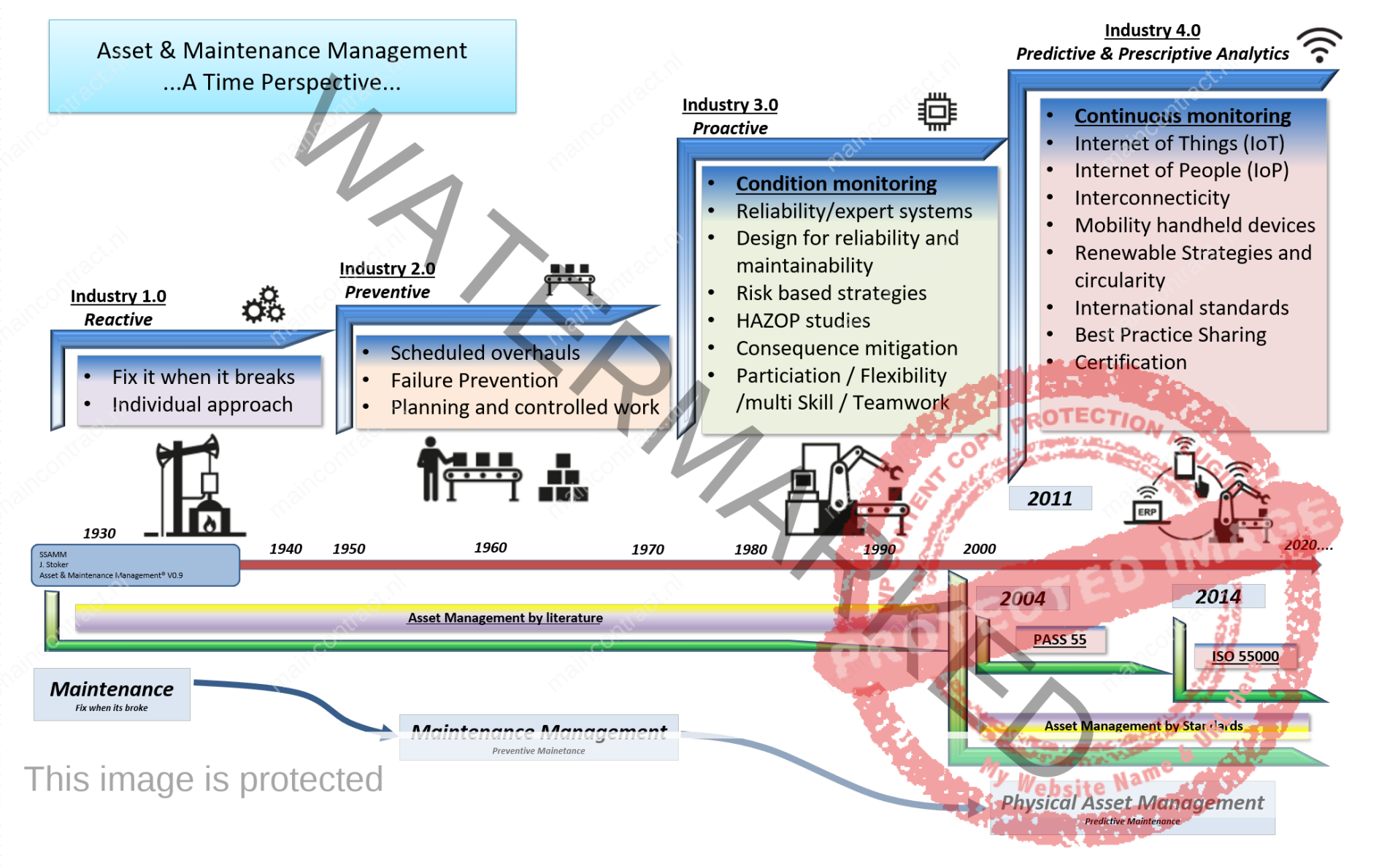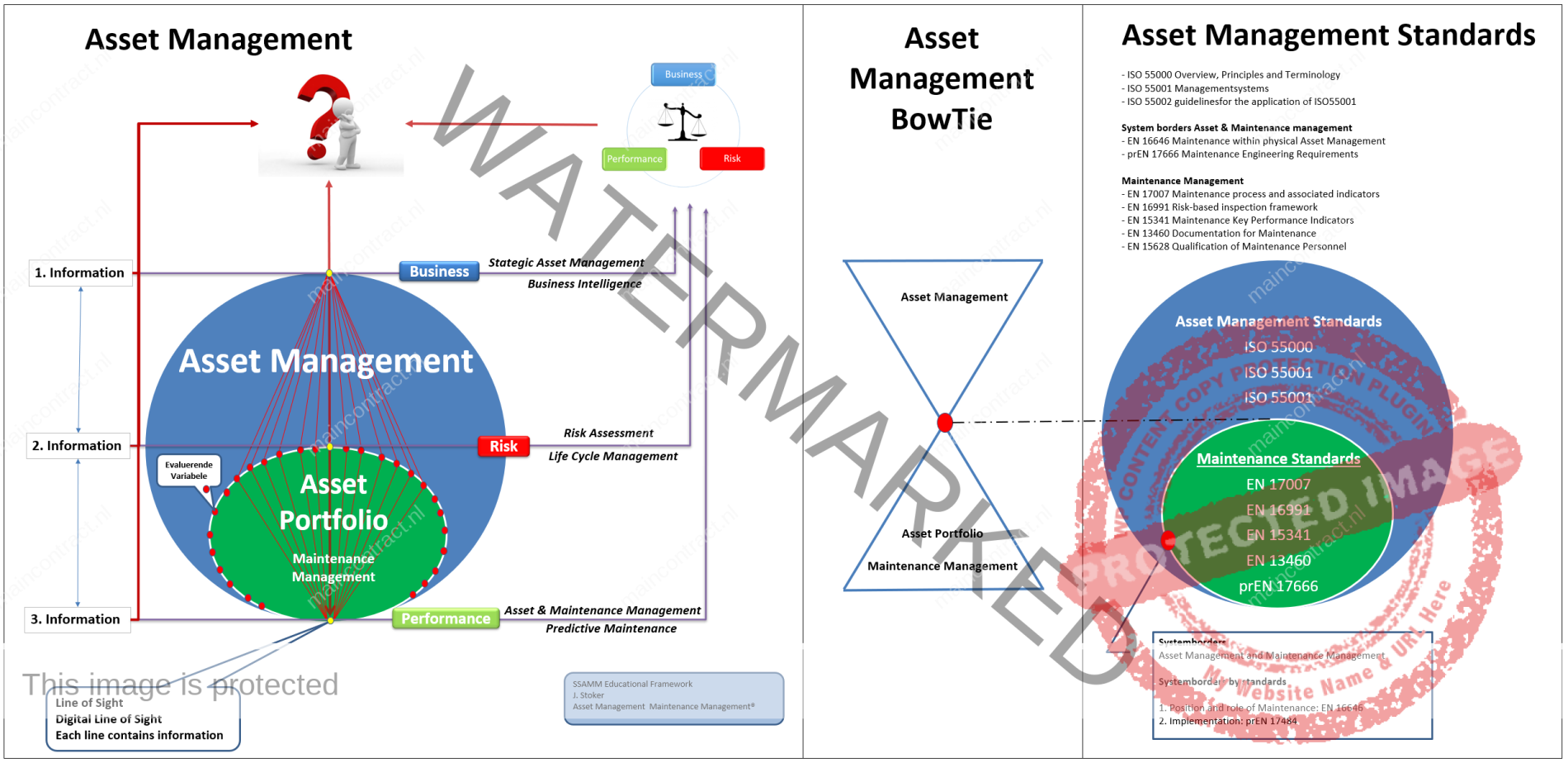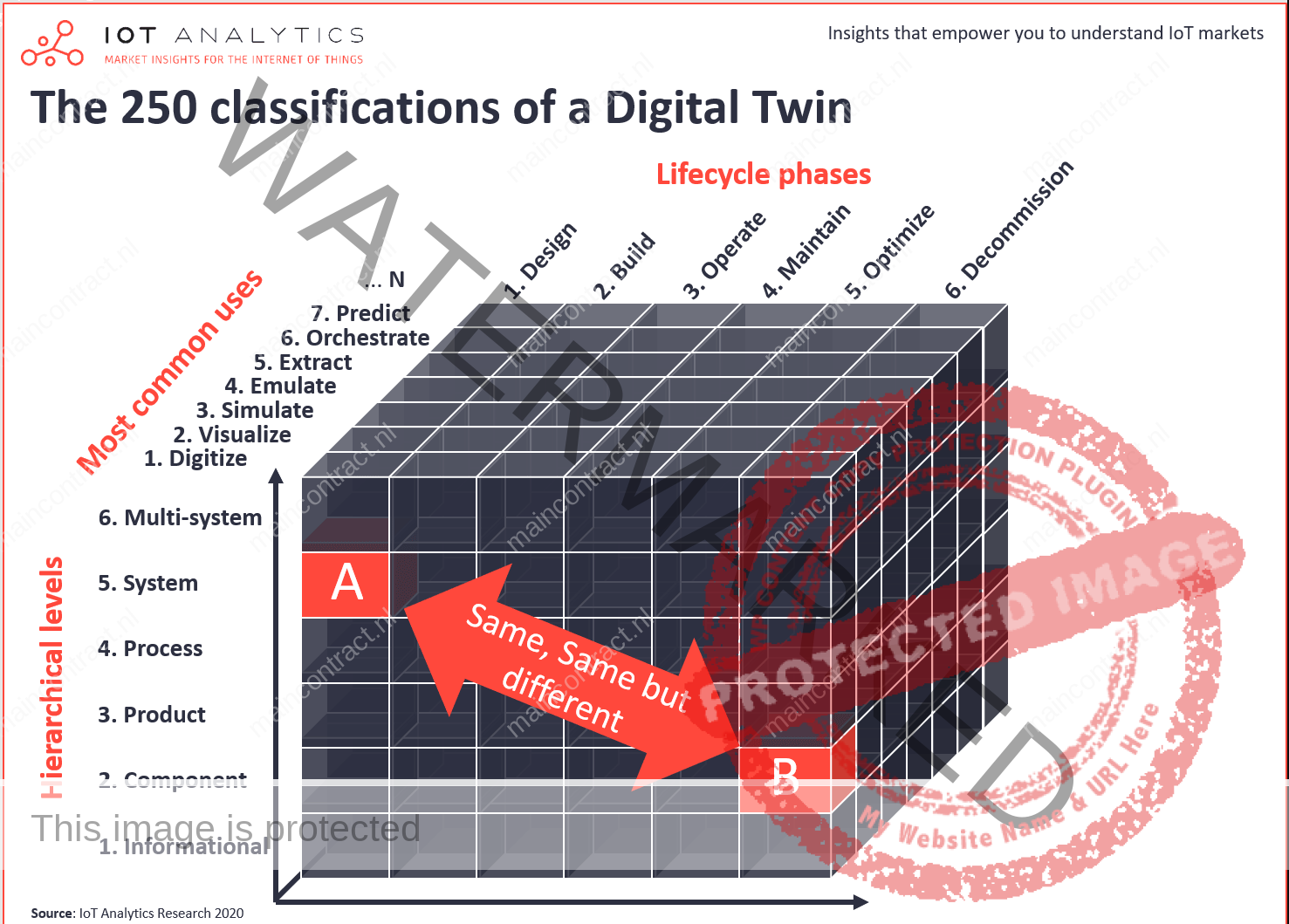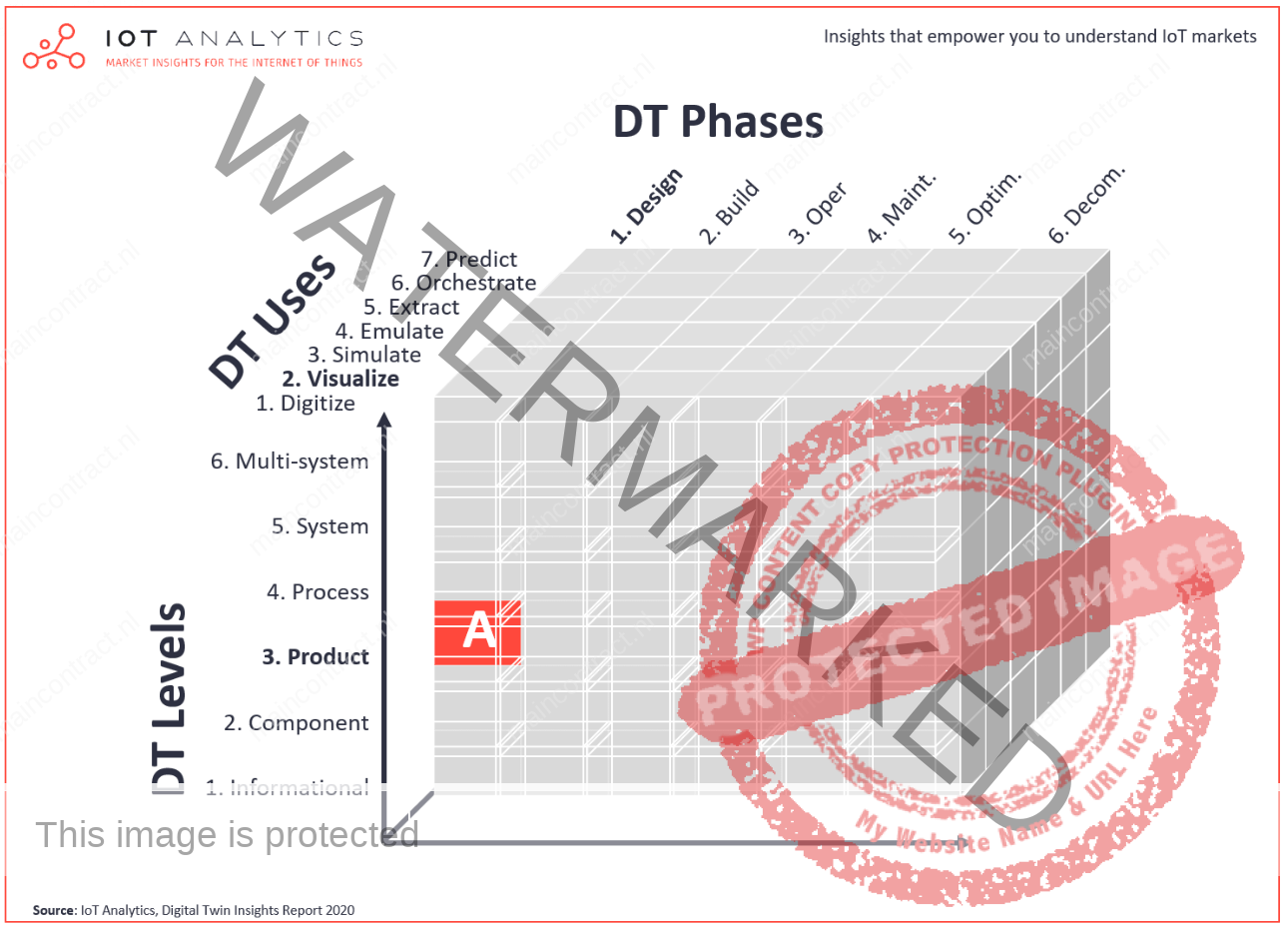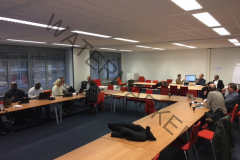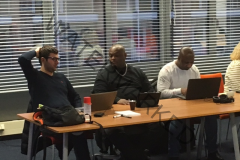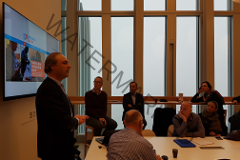Pagina Inhoud [Weergeven]
- Publicatie 8 Januari 2022
![]()
A digital twin is a virtual representation that serves as the real-time digital counterpart of a physical object or process. Though the concept originated earlier (attributed to Michael Grieves, then of the University of Michigan, in 2002) the first practical definition of digital twin originated from NASA in an attempt to improve physical model simulation of spacecraft in 2010.
Digital twins are the result of continual improvement in the creation of product design and engineering activities. Product drawings and engineering specifications progressed from handmade drafting to computer aided drafting/computer aided design to model-based systems engineering.
The digital twin of a physical object is dependent on the digital thread—the lowest level design and specification for a digital twin—and the “twin” is dependent on the digital thread to maintain accuracy. Changes to product design are implemented using engineering change orders (ECO).
An ECO made to a component item will result in a new version of the item’s digital thread, and correspondingly to the digital twin.The digital twin of a physical object is dependent on the digital thread—the lowest level design and specification for a digital twin—and the “twin” is dependent on the digital thread to maintain accuracy. Changes to product design are implemented using engineering change orders (ECO). An ECO made to a component item will result in a new version of the item’s digital thread, and correspondingly to the digital twin.
![]()
Author: IOT Analytics Source: Article
The digitization boom of the last 6+ years has brought up some truly exciting new technology concepts. Digital Twin is one such concept that has gained wide interest and according to Google Trends even tops general search interest in widely searched topics such as the “Industrial IoT” or “IoT Platforms”.
What is a Digital Twin?
Today many companies offer “Digital Twin technology” but a closer comparison reveals vast differences. IoT Analytics recently looked at Digital Twins in-depth and published a 90-page insight report on the topic.
A first glance at the websites of companies that offer Digital Twin technology shows that many definitions for digital twins already exist, however there is no commonly accepted definition.
![]()
Click to enlarge: Asset & Maintenanec Management-A time perspective by Jan Stoker
- Siemens, for example, defines Digital Twins as “a virtual representation of a physical product or process, used to understand and predict the physical counterpart’s performance characteristics”.
- Dassault Systems takes a narrower view and defines Digital Twin technology as “a virtual representation of what has been produced.”
- IBM limits the scope to real-time data and defines it as “a virtual representation of a physical object or system across its lifecycle, using real-time data to enable understanding, learning and reasoning”.
- Wikipedia, A digital twin is a virtual representation that serves as the real-time digital counterpart of a physical object or process.
The commonality in most definitions is that Digital Twins are a “digital abstraction or representation of a physical system’s attributes and/or behavior”.
The devil is in the details because one could still refer to a fully-automated dynamically-recalibrating virtual representation of a physical system or alternatively just one software element of that setup – or something else.
![]()
The recently published standard EN 17485 introduces methods and procedures about maintenance within physical asset management for all the levels and functions of the organizations’ management, including corporate planning management, plant management, technical management, production management, financial management, asset management, maintenance management, and quality management. Further and maybe even greater benefits are now being found through improved credibility in the eyes of customers, regulators and other stakeholders.
Click to enlarge
Physical asset management also results in much greater engagement and motivation of the workforce, and in more sustainable, continual improvement business processes. Physical asset management builds up the required link between maintenance management and the organizational strategic plan and gives direction to maintenance activities.The standards EN 16646 and EN 17485 build the bridge between ISO 5500x (Asset management system standards) and the EN maintenance standards. ISO 55001 states that organizations should determine e.g. the organizational context, requirements for the assets, decision criteria, strategic asset management plan and asset management plan (including maintenance).
However, it does not describe how to do it. Respectively, maintenance standards often introduce e.g. the concept of the required function or the concept of maintenance strategy, but do not explain how they have been determined. EN 17485 introduces a methodological framework which advises organizations to implement the requirements presented in ISO 55001. By doing this it creates the bridge between the several maintenance standards and ISO 5500x in order to give an applicable starting point to the more detailed documents for the specific sub-functions of maintenance (See AM-BowTie).
This insights, the Asset Management BowTie, can be added toward the Asset Management paradigm with the (Digital) Line of Sit. To add the BowTie principle, the body of thoughts of the EN-17485 can be incorporated in the Asset Management paradigm with the mentioned standards. Result is a deepened figure 1 of the ISO5500 completed with the Line(s) of Sights, the levels of information, Business, Risk Assessment and Asset & Maintenance going to decision making in balancing Costs, Risks and Performance.
Click to enlare Asset Management BowTie: See Body of thoughts AM-BowTie Click Here
![]()
The research that IoT Analytics performed on the topic showed that there are 3 dominant dimensions by which Digital Twins can be classified:
- The hierarchical level the Digital Twin is applied to (6 levels identified)
- The lifecycle phase in which the Digital Twin is used (6 phases identified)
- The use of the Digital Twin (7 most common uses identified)
There are 252 potential combinations of the 6 levels, 6 phases, and 7 most common uses (6x6x7=252), all of which describe a different classification of a Digital Twin.
The resulting Digital Twin cube explains why a digital replica which is used for a “product simulation during the design phase” is completely different to a “process parameter prediction during manufacturing operations”. Both are called Digital Twin but only have limited overlap.
One should note that a fourth dimension could be added to describe the data type used in the digital twin use case. One could make use of real-time data, historical data, or simply test data. For simplicity reasons this was not visualized.
The three dimensions of digital twin technology
Dimension 1: Hierarchical levels
There are 6 hierarchical levels of a digital twin.
- Informational: Digital representations of information e.g., an operations manual in digital format.
- Component: Digital representations of individual components or parts of a physical object e.g., virtual representation of a bolt or a bearing in a robotic arm.
- Product: Digital representations of the interoperability of components/parts as they work together at a product level e.g., virtual representation of a rotating robotic arm.
- Process: Digital representations enabling the operation and maintenance of entire fleets of disparate products that work together to achieve a result at a process level e.g., virtual representation of a manufacturing production line process.
- System: Digital representations twinning multiple processes and workflows, not just limited to physical objects, enabling the optimization of operations at a system level e.g., virtual representation of an entire manufacturing system.
- Multi-system: Digital representations of multiple systems working together as one unified entity to enable unprecedented insight, testing and monitoring of key business metrics in a data-driven manner e.g., virtual rep. of several systems working in unison such as systems for industrial manufacturing, supply chain, traffic control, communication, HR, etc.
Dimension 2: Lifecycle phases
There are 6 lifecycle phases in which digital twins are applied.
- Design: In the design phase, requirements are gathered and one or more designs (e.g., for components, products, processes, or systems) are developed, with which the required outcome can apparently be achieved e.g., using digital twins as the source of all data such as object properties and parameter values for which virtual representations can be build on.
- Build: The build phase takes the code requirements outlined previously and uses those to build the actual software-based digital twin. This phase also covers data management, configuration provisioning, repository management and reporting e.g., using digital twins to virtually build and simulate prototypes without having to build more cost intensive physical counterparts for testing.
- Operate: The operation phase is when actual users start using online digital twins in active deployments. Typical operative tasks include extracting sensor data or orchestrating devices remotely e.g., using digital twins to extract real-time sensor data from a rotating robotic arm in a production line or updating the device configuration over-the-air.
- Maintain: The maintenance phase involves making changes to hardware, software, and documentation to support its operational effectiveness. It includes making changes to correct problems, enhance security, or address user requirements e.g., using digital twins to do regular maintenance tasks such as sending OTA updates for system configuration or cybersecurity.
- Optimize: The optimize phase requires use of existing capability information and a statistical approach to tolerancing. This can used to improve development of detailed design elements, predicting performance, and optimizing operations e.g., using digital twins to run a large amount of tests that generate insights to help predict future performance and failures.
- Decommission: The decommissioning phase involves the removal of a digital twin release from use. This activity also known as system retirement or system sunsetting e.g., using digital twins to remotely decommission devices no longer in use and subsequently retire the use of that corresponding digital twin.
Dimension 3: Most common uses
A multitude of uses exist for digital twins, 7 of the most common uses are highlighted here:
- Digitize: Any digitized information
- Visualize: Basic digital representation of a physical object
- Simulate: Simulation model of a physical system in its environment
- Emulate: Emulation model of the physical system with real software
- Extract: Extraction model of real-time data streams, physical to virtual system
- Orchestrate: Orchestration model for virtual control/updating of physical devices
- Predict: Prediction model to predict future behavior of the physical system
![]()
5. React, Discuss & Article
Discuss or give your opinionFollow on FacebookFollow on Twitter
Related Articles
Tags: Circulair



